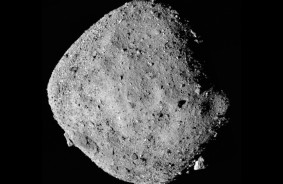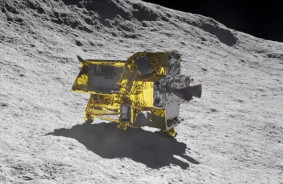The asteroid that collided with Ganymede, Jupiter's largest moon, was found to be 20 times larger than the one responsible for the extinction of dinosaurs on Earth.
This catastrophic event occurred around 4 billion years ago. As a result of the impact, Ganymede altered its position such that the crater from the collision is now facing away from Jupiter.
Computer simulations revealed that the diameter of the asteroid was approximately 300 kilometers. It struck Ganymede's surface at an angle of 60–90 degrees. The impact created an initial crater up to 1600 kilometers wide, which was partially filled with debris and dust ejected during the collision.
Dr. Naoyuki Hirata from Kobe University in Japan explains that the distinctive grooves on Ganymede's surface were long believed to be remnants of multiple concentric rings formed by the impact of a giant asteroid. However, it remained unclear how powerful this collision was and how it affected the moon of Jupiter.
In his research, published in Scientific Reports, Hirata describes how the center of the groove system points almost directly opposite to Jupiter. This could have happened if the asteroid that struck Ganymede added extra weight to the impact zone, destabilizing the moon and causing it to rotate on its axis.
The collision had dramatic consequences for Ganymede, which has a diameter of over 4800 kilometers, making it larger than Mercury. The impact "completely obliterated the original surface" of the moon and affected its internal structure, where scientists believe a salty ocean is hidden.
Further evidence either supporting or refuting Hirata's theory may come from the Juice probe of the European Space Agency, which was launched last year to explore Jupiter and its moons. As part of its mission, the spacecraft will search for sources of water and energy necessary for life on Jupiter's satellites.
Source: The Guardian, Phys













Comments (0)
There are no comments for now